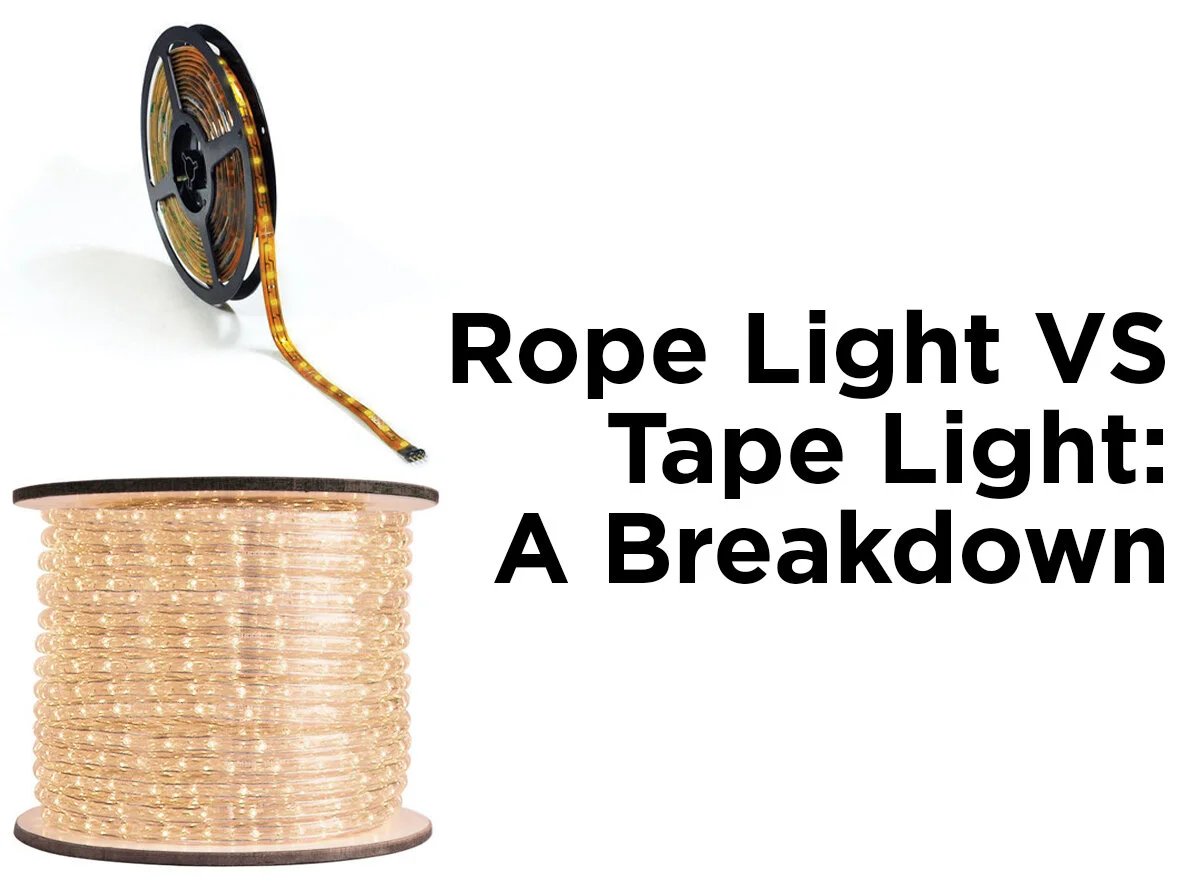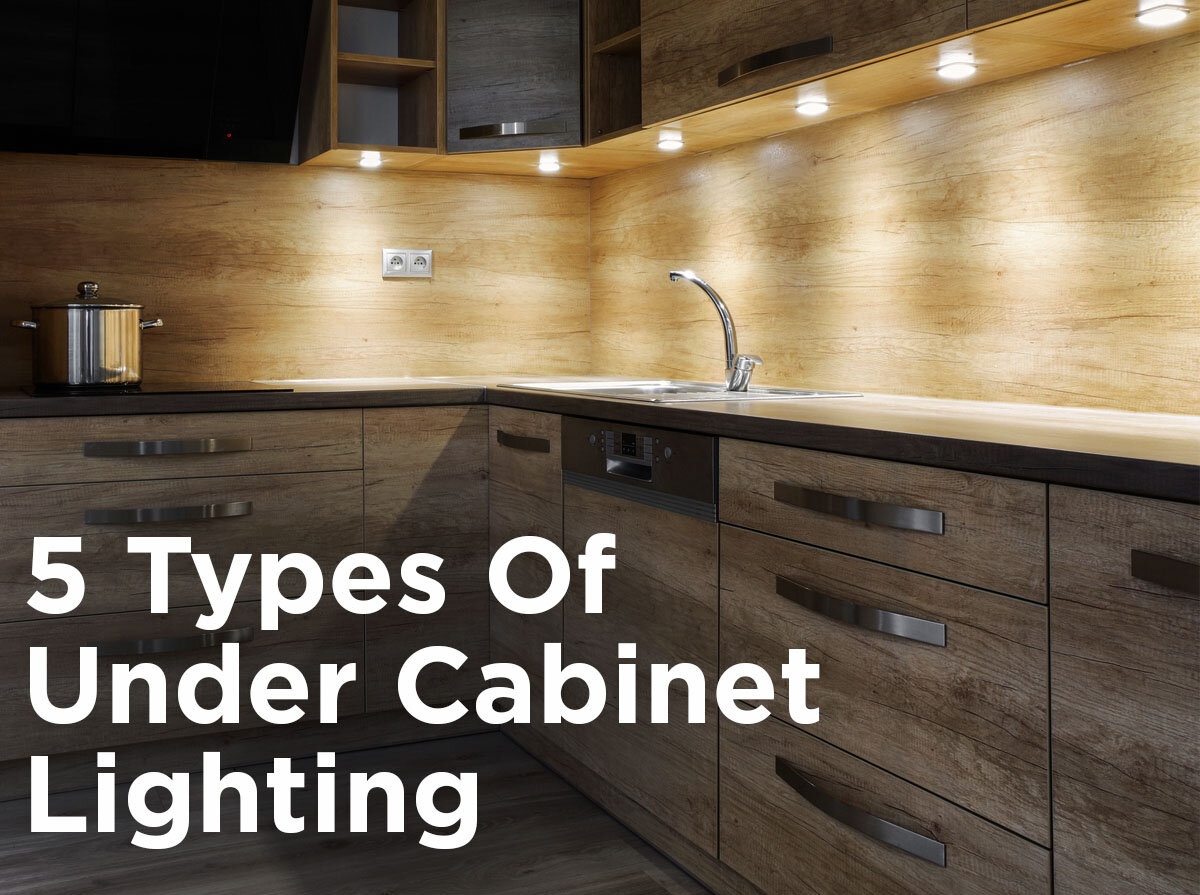Pros and Cons of Tape Lights and Rope Lights
While tape and rope lights may be used in similar settings, it’s important to learn the ropes about their technical similarities and differences. Here we will weigh the pros and cons for each type of lighting as well as clarify which is best for a certain setting.
Sticking with Tape
The first thing to note about tape lighting, also known as strip lighting, is that it’s flat and flexible. While LEDs are mounted on one side of the circuit board, an adhesive on the other side allows it to live up to its name. It can be adhered to multiple types of surfaces – and last for a long time.
In general, tape lighting is more widely used for practical purposes as it offers better illumination, more control capabilities, easier mounting, and more flexibility.
Pros
Illumination: If you are looking for a light source with higher CRI and better color consistency, tape lighting is your go-to. Because it consists of LEDs only– while rope lighting can be either LED or incandescent – it has a higher light output. Due to its high efficacy, tape lighting may be used in both practical and decorative settings. It operates on 12 or 24 volts.
Color: The LEDs in tape lights allow improved control capabilities regarding color configuration. You may opt for tunable white or color changing RGB. You are not stuck with the one color that comes out of the box! Tape lights can be dimmable as well.
Installation: With a sticky backing that adheres to a variety of surfaces for a long time, tape lights are easy to mount, install, and conceal. Keep in mind, however, that for underwater purposes, tape lights will need mounting clips.
Flexibility: Tape lights are more flexible than rope lights, capable of bending 90-degrees, which means they can be used on the corners of walls or other sharply angled surfaces.
Underwater Capability: Not all tape lights can be used underwater; however, underwater tape lights are made specifically for swimming environments, and they may need accessories, including clips, cords, or cables, to complete the installation.
Cons
Price Point: Since tape lights are costly to manufacture – with having to use expensive equipment and experienced workers – they are expensive to purchase in comparison to rope lights.
Beam Angle: Half of the makeup of a tape light is adhesive, so the maximum beam angle it can achieve is 180-degrees, although most are limited to 120-degrees.
Regular tape lights can be used for a variety of applications, but weighing these pros and cons helps decide which applications are best suited for this versatile lighting style. Tape lights are ideal around bathroom or vanity mirrors, under stairs and cabinets, in retail stores highlighting certain products, around the home, or in any application where you are trying to provide better visibility in a decorative way. Underwater tape lights may be used in pools or fountains.
Showing You the Ropes
Rope lighting is not flat; rather, the individual LED or incandescent bulbs are protected inside a cylindrical tube made of a clear material that allows the lighting to shine through, emitting a lower light output, but a 360-degree beam angle. Because of this, rope lights are useful for decorating purposes, but are typically not as practical as tape lighting.
Pros
Beam Angle: Rope lights are encased in a clear tube usually made of plastic, so the light can be seen at a 360-degree angle, which is ideal in situations where the lighting serves as decoration.
Price Point: Rope lights are simple and easy to manufacture, so they are inexpensive when compared to tape lights.
Color: Although rope lights do not offer color changing controls, they can still be purchased in single color options, such as white, blue, red, green, orange, yellow, and more, or they can be purchased in multi-color. Rope lights may be dimmable as well, depending on the product.
Maximum Run Length: When it comes to maximum run length, defined as the maximum length of rope or tape light that can be wired to a single power source before any electrical issues or power loss occurs, rope lights win the battle with tape lights.
UL Listed for Wet Locations: Since rope lights are UL listed for wet locations, they can be used outside where they are exposed to rain and heat and other elements. This does not mean, however, that they can be used underwater.
Cons
Illumination: A rope light can contain either LEDs or incandescent bulbs within its flexible tube, but the light output is not as high as that of a tape light, and its voltage operates on 12 volts or 120 volts.
Flexibility: Although flexible to an extent, the rope light is made up of wires and casing that are not forgiving at large angles. Bending these lights too much could cause damage to the wires. Connectors can be used to make up for this con.
Mounting: Because rope lights do not have an adhesive on their backside, they must be mounted using clips or brackets.
Rope lights are ideal for decorative purposes when illumination is meant to provide aesthetic appeal and not better visibility. The best places to use rope lights include Christmas trees and outdoor displays, balconies, walkways, patios, and landscape accenting.
At the End of the Rope
Now that we’re at the end of the rope in this comparison, it’s up to you which lighting you think is best for your application. After weighing these pros and cons, hopefully you have a better understanding of tape lights and rope lights. If you need any more information, you can reach out to the lighting experts at 1000Bulbs at 1-800-624-4488.









